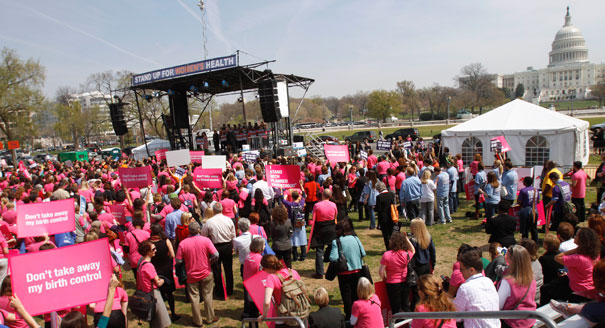Recently, Congressman Cliff Stearns of Florida, who chairs the Oversight Subcommittee of the House Energy and Commerce Committee, asked the Planned Parenthood Federation of America for financial records for the past thirteen years. Congressman Stearns and the other Republicans on the committee intend to investigate what they say is a possible misuse of federal funds on the part of the Federation. This request follows on the heels of attempts, thus far unsuccessful, to eliminate federal funding for the national organization. (Several states, however, have cut funding for the Federation’s affiliates.)
2011 has been a tough year for women’s reproductive rights in general and for Planned Parenthood in particular. For the most part, conservatives in Congress, governors’ offices, and state legislatures who want to eliminate government funding for Planned Parenthood say that they are taking a stand against abortion. But Planned Parenthood doesn’t (and can’t) use government funds to pay for abortion. The organization strongly supports abortion services and has done so since abortion became legal in the 1970s – but not with public money. Government funding does pay for the family planning and other women’s health services, such as cervical cancer screenings and mammograms, that Planned Parenthood affiliates have for years been providing to low-income women across the country. In recent years, some offices have added services for men, too.
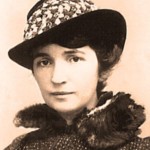 Margaret Sanger coined the term “birth control” nearly a century ago and was twice arrested for her efforts to help women prevent unwanted pregnancies. She died in 1966 believing that at least in the United States, the battle for a woman’s right to decide whether and when to bear a child had been won when the birth control pill was approved in 1960. If she could see us now, what would she make of our current reproductive landscape? Today, women with low incomes can find it difficult – sometimes impossible – to secure reproductive health care. At the other end of the spectrum, however, women of means have access to a full range of reproductive services, from birth control and abortion to high-tech fertility treatments.
Margaret Sanger coined the term “birth control” nearly a century ago and was twice arrested for her efforts to help women prevent unwanted pregnancies. She died in 1966 believing that at least in the United States, the battle for a woman’s right to decide whether and when to bear a child had been won when the birth control pill was approved in 1960. If she could see us now, what would she make of our current reproductive landscape? Today, women with low incomes can find it difficult – sometimes impossible – to secure reproductive health care. At the other end of the spectrum, however, women of means have access to a full range of reproductive services, from birth control and abortion to high-tech fertility treatments.
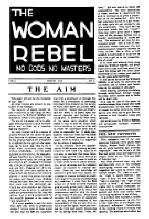 Margaret Sanger’s name was synonymous with the birth control movement for a half a century after she founded The Woman Rebel in 1914. A radical in those days (the slogan of The Woman Rebel was “No Gods, No Masters”), she later became more conservative politically, but she remained an unabashed feminist and never swerved from her core belief that access to birth control, on an unfettered, democratic basis, was both a fundamental right of all women and the bedrock foundation of social progress.
Margaret Sanger’s name was synonymous with the birth control movement for a half a century after she founded The Woman Rebel in 1914. A radical in those days (the slogan of The Woman Rebel was “No Gods, No Masters”), she later became more conservative politically, but she remained an unabashed feminist and never swerved from her core belief that access to birth control, on an unfettered, democratic basis, was both a fundamental right of all women and the bedrock foundation of social progress.
In 1928, Sanger’s Motherhood in Bondage appeared. By then, she had abandoned her radical past to court the physicians and politicians on whom she counted to make her vision a reality. Anti-birth control laws – and sentiments – were still strong in these years. Sanger believed, correctly, that without the support of powerful men (yes, they were nearly all men) in medicine and politics, the birth control movement had no chance of succeeding.
And she was determined that it would succeed. Motherhood in Bondage consists of hundreds of letters Sanger received in the 1910s and 1920s, mostly, but not entirely, from women who were desperate to stop having babies. Some of the letters are heartbreaking. A typical one began, “I was married when I was fourteen years old. Now I am a mother of sixteen children. . . . and am on my way with the seventeenth.” Another woman wrote, “I have been married twelve years and I am twenty-six years old.” She then recited a litany of too-frequent pregnancies, births, still-births and miscarriages. Many of the women grew up in households marked by poverty and violence, only to find themselves in the same situation in their own marriages.
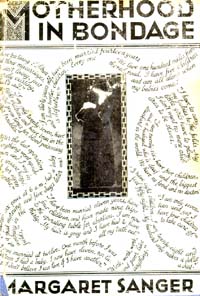 Marrying at what we would consider today a startlingly young age, these women also remind us that teen-aged motherhood is not a new phenomenon. Marriages at fourteen and fifteen were not uncommon among them, and some were even younger. “I got married at twelve years of age,” one wrote, “and now I’m twenty-three years old with six children.” Unlike many of today’s young mothers, these teenagers were married; but they were no better prepared for the hardships of rearing children with few resources. They were desperate for useful contraceptive advice that would allow them to gain some control over their lives.
Marrying at what we would consider today a startlingly young age, these women also remind us that teen-aged motherhood is not a new phenomenon. Marriages at fourteen and fifteen were not uncommon among them, and some were even younger. “I got married at twelve years of age,” one wrote, “and now I’m twenty-three years old with six children.” Unlike many of today’s young mothers, these teenagers were married; but they were no better prepared for the hardships of rearing children with few resources. They were desperate for useful contraceptive advice that would allow them to gain some control over their lives.
Sanger could be a polarizing figure within the birth control movement, and she also made questionable alliances with people whose eugenicist agendas were hardly progressive. But she was also a monumental figure, who never abandoned her central belief – that a woman’s ability to control her reproductive life was the foundation of social progress. As far as she was concerned – although there were those who disagreed – her contention that the poor should have fewer children did not conflict with her conviction that for the poor, having fewer children would lead to a route out of poverty for their families. More generally, she insisted, it would also engender overall prosperity and greater autonomy for women.
Sanger and other birth control advocates gained ground in the 1930s, helped along, no doubt, by the economic hardships of the Great Depression. By then, physicians and Americans in general were expressing more favorable attitudes towards contraception. Except among Catholics and some conservative Protestant denominations, cultural opposition to birth control began to wane, as it became viewed as a means for couples to space their children rather than a way for women to evade childbearing altogether. Laws against the sale and use of birth control devices began to crumble. (Even so, as late as 1960 some thirty states had laws that in various ways restricted the advertisement or sale of birth control devices.) The birth control movement, which had splintered during the Great Depression, re-united in 1939 as the Birth Control Federation of America. In 1942, to cement its new, more moderate reputation as a “family planning” organization – and in spite of Sanger’s vehement opposition – it became the Planned Parenthood Federation of America.
Planned Parenthood had entered the mainstream. In the 1960s and 1970s, it was more likely to be criticized by left-leaning activists than by establishment Republicans. Not today. Planned Parenthood’s focus on a combination of reproductive rights and reproductive health elicits approval from progressives and criticism from conservatives.
It’s easy to blame the abortion wars, but doing so might not tell the whole story. By the first decade of the twenty-first century, journalists and others began to see a larger, if decentralized and somewhat inchoate, anti-birth control movement gaining power among social conservatives.
Could that be what’s fueling the drive to defund Planned Parenthood?
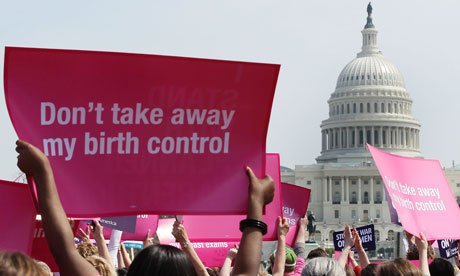 I admit I was skeptical when I first read Russell Shorto’s 2006 New York Times Magazine article about the new anti-contraceptive movement. How could such an idea possibly succeed in an era of so many reproductive choices? I simply could not see that a movement opposing birth control could have staying power in an age when both women and men have become accustomed to having the ability to control their reproductive lives. Surely they would be unwilling to give that up.
I admit I was skeptical when I first read Russell Shorto’s 2006 New York Times Magazine article about the new anti-contraceptive movement. How could such an idea possibly succeed in an era of so many reproductive choices? I simply could not see that a movement opposing birth control could have staying power in an age when both women and men have become accustomed to having the ability to control their reproductive lives. Surely they would be unwilling to give that up.
But now? I’m not so sure.
___________________________________________________________
If you want to know more about some of the ideas talked about here, please see:
Margaret Sanger, Motherhood in Bondage. Reprint: (Ohio State University Press, 2000). Forward by Margaret Marsh
Ellen Chesler, Woman of Valor: Margaret Sanger and the Birth Control Movement in America (Simon and Schuster, 1992)
Russell Shorto, “Contra-Contraception,” New York Times Magazine, May 7, 2006.
Gail Collins, “The War Behind the Abortion War,” New York Times, April 13, 2011.
